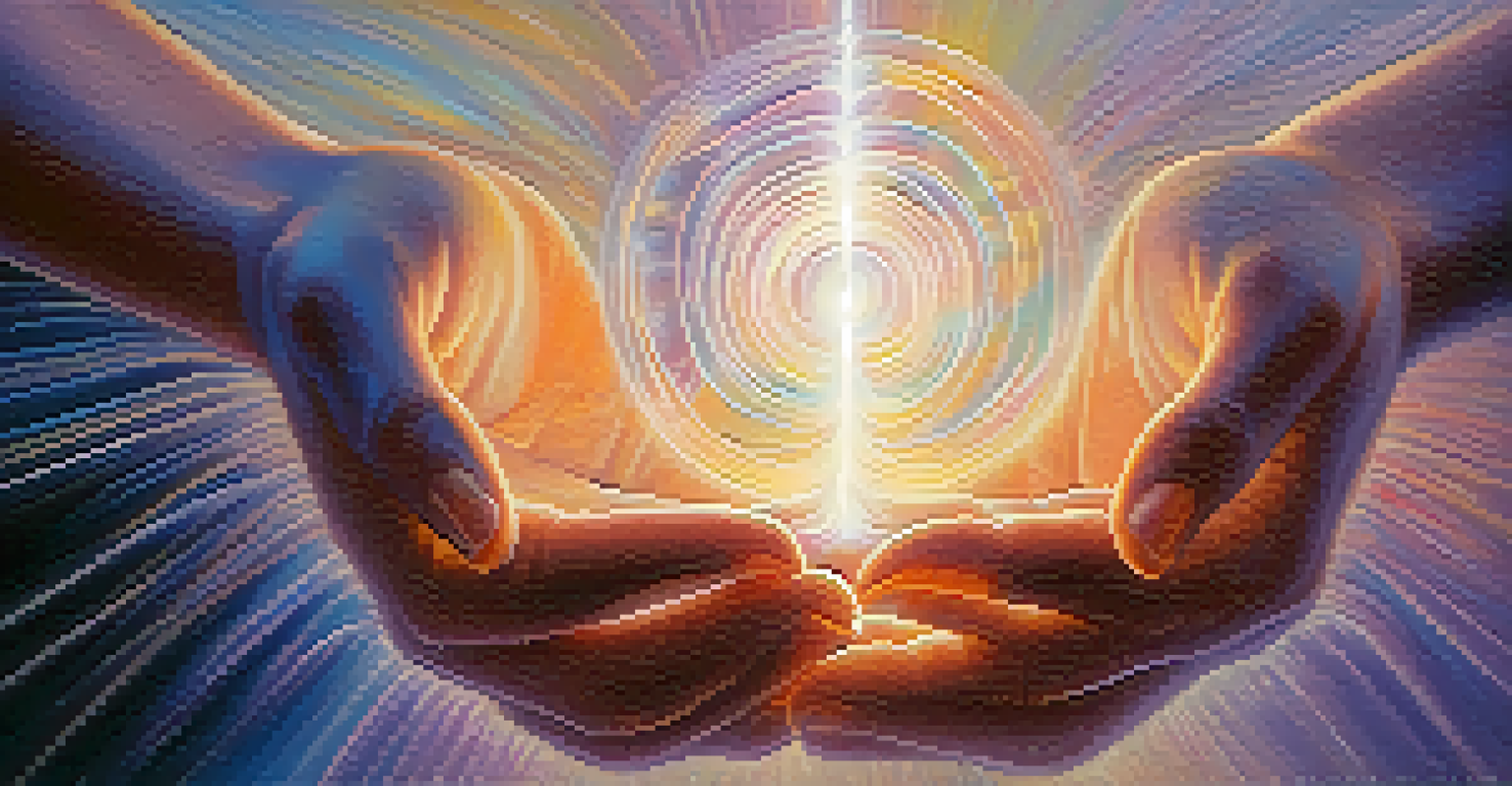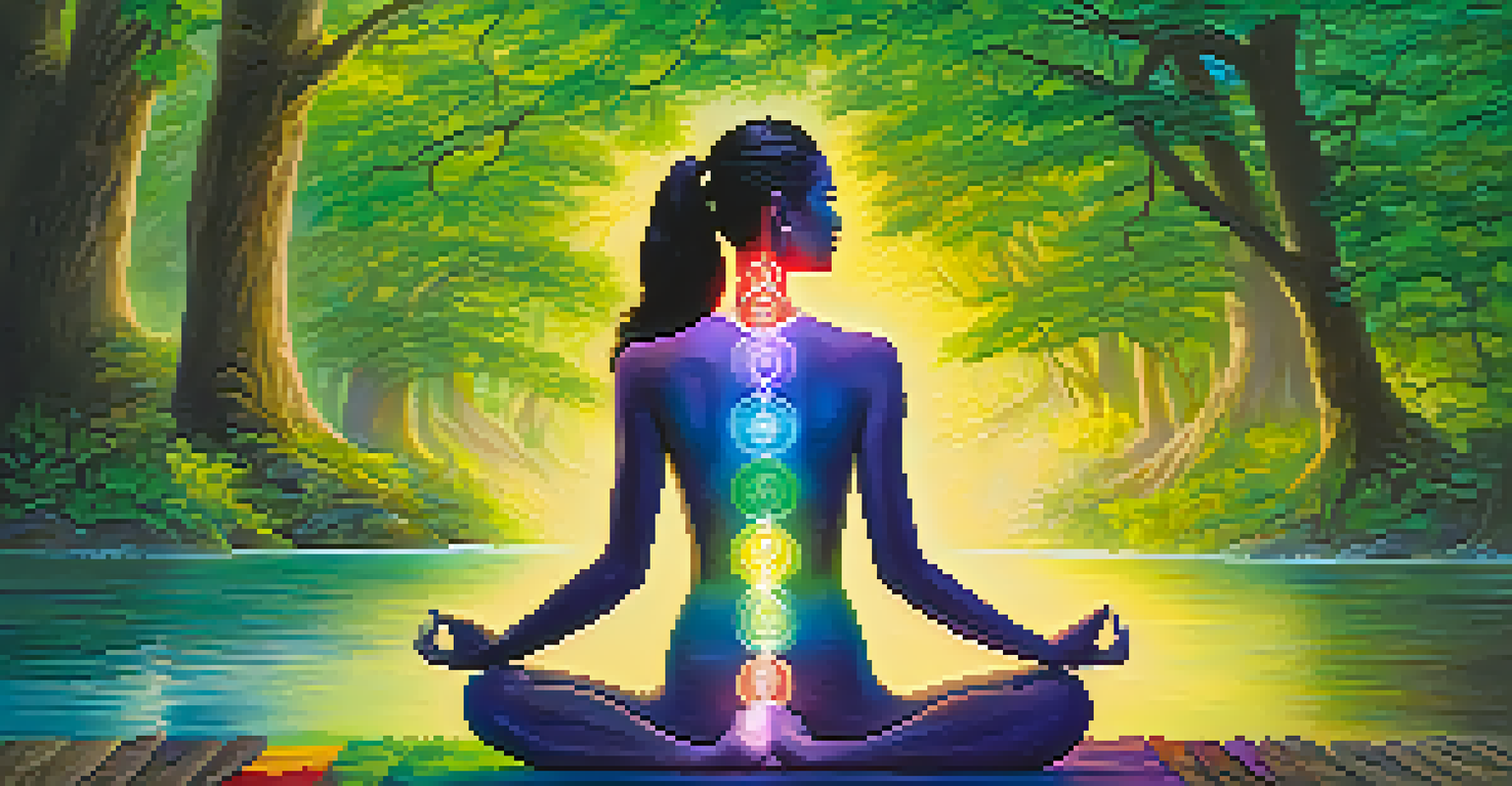Reiki: Harnessing Universal Energy for Healing

Understanding Reiki: A Journey into Universal Energy
Reiki is a holistic healing practice that channels universal energy to promote healing and balance. Originating from Japan, the term 'Reiki' combines two words: 'Rei,' meaning universal, and 'Ki,' meaning life force energy. This practice is based on the belief that everyone has a natural life force that flows through them, and when this energy is disrupted, it can lead to physical and emotional issues.
The healing comes from the nature of the patient’s own inner wisdom.
Many people are drawn to Reiki as a complementary therapy to traditional medicine. The gentle touch of a Reiki practitioner can help to restore harmony within the mind, body, and spirit. By aligning the energy centers, or chakras, in the body, Reiki aims to alleviate stress, reduce pain, and promote an overall sense of well-being.
Whether you're seeking relief from chronic pain or simply want to enhance your relaxation, Reiki offers a peaceful approach to healing. It invites you to connect deeply with this universal energy, fostering a sense of unity with yourself and the world around you.
The History of Reiki: Connecting Past and Present
Reiki's roots can be traced back to the early 20th century, when Dr. Mikao Usui developed the practice after a profound spiritual experience. He sought to create a method for healing that anyone could learn and practice, making it accessible to all. This foundational vision continues to resonate with practitioners today.

After Dr. Usui's passing, his teachings were carried on by his students, leading to the formation of different Reiki lineages. Each lineage may have slight variations in practice, but they all share the core principles of harnessing universal energy for healing. This rich tapestry of history adds depth and meaning to the practice.
Reiki Promotes Holistic Healing
Reiki is a gentle practice that channels universal energy to restore balance and alleviate physical and emotional issues.
As Reiki spread beyond Japan, it gained popularity worldwide, particularly in the West. Today, many people integrate Reiki into their wellness routines, appreciating its ability to complement various healing modalities, from acupuncture to psychotherapy.
How Reiki Works: Tapping Into Healing Energy
At its core, Reiki works on the principle that everything is energy, including our thoughts and emotions. When you receive a Reiki treatment, the practitioner lightly places their hands on or near your body, allowing the energy to flow to you. This process encourages relaxation and helps to clear energy blockages.
Energy flows where attention goes.
During a session, you might feel sensations such as warmth, tingling, or deep relaxation. These feelings indicate that the Reiki energy is working to restore balance within you. The energy is guided by your own needs, which means each session is unique and tailored to your specific situation.
Much like a gentle stream flowing over rocks, Reiki can help smooth out the rough patches in your energy field, promoting healing and harmony. The more you engage with Reiki, the more you learn to trust this universal energy and its ability to support your healing journey.
Benefits of Reiki: A Holistic Approach to Wellness
Reiki offers a plethora of benefits, making it an attractive option for those seeking holistic healing. Many people report feeling a significant reduction in stress and anxiety after a session, as Reiki promotes deep relaxation and a sense of calm. This state of tranquility can lead to improved mental clarity and emotional stability.
Additionally, Reiki can complement medical treatments, providing relief from pain and discomfort. Some studies have shown that patients receiving Reiki alongside traditional therapies experience less pain and quicker recovery times. This synergy makes it a valuable tool in the realm of holistic health.
Diverse Techniques Enhance Reiki
Reiki encompasses various techniques, including hands-on and distant healing, making it adaptable to individual needs.
Moreover, Reiki isn’t just for physical ailments; it can also support emotional and spiritual healing. By addressing emotional blockages, Reiki helps individuals process feelings and move toward a more balanced state of being—much like clearing clutter from a packed room.
Reiki Techniques: Exploring Various Methods
Reiki encompasses several techniques, each designed to channel energy in unique ways. One common method is the traditional hands-on approach, where the practitioner places their hands on or near the recipient's body to facilitate energy transfer. This nurturing touch creates a safe space for healing to occur.
Another technique is distant Reiki, which allows practitioners to send healing energy across time and space. This method can be particularly beneficial for individuals who may not be able to attend in-person sessions. With focused intention, practitioners tap into the universal energy, offering support and healing from afar.
Lastly, some practitioners incorporate guided visualization and meditation into their sessions, enhancing the experience. By combining these techniques, Reiki becomes a versatile tool, adaptable to the needs and preferences of each individual.
Finding a Reiki Practitioner: What to Look For
When seeking a Reiki practitioner, it's essential to find someone who resonates with you. Start by researching local practitioners and looking for reviews or testimonials that speak to their effectiveness. Personal recommendations can also be invaluable in finding a trustworthy healer.
Inquire about the practitioner's training and experience, as well as their specific approach to Reiki. Some may specialize in particular techniques, such as distant Reiki or chakra balancing. Understanding their background can help ensure that you find a practitioner who aligns with your needs.
Find the Right Reiki Practitioner
Choosing a Reiki practitioner who resonates with you and aligns with your needs is crucial for a positive healing experience.
Finally, trust your intuition. A good Reiki session should leave you feeling relaxed and uplifted. If you feel comfortable and safe with your practitioner, you're more likely to have a positive experience that supports your healing journey.
Integrating Reiki Into Your Daily Life
Reiki isn't just for occasional sessions; it can be easily integrated into your daily routine. Practicing self-Reiki allows you to tap into universal energy whenever you need it. Simply find a quiet space, focus on your breath, and place your hands on areas of your body that need attention, inviting the energy to flow.
Additionally, incorporating mindfulness and meditation can enhance your connection to Reiki. By cultivating awareness and presence, you create an environment that supports healing. This practice can lead to a deeper understanding of your own energy and how it interacts with the world around you.

Embracing the principles of Reiki in your day-to-day life can promote a more balanced and peaceful existence. As you become more attuned to your energy, you'll find it easier to navigate life's challenges with calmness and clarity.